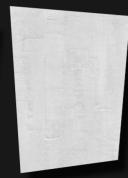Ontological Conundrums: Translating ‘The Waste Land’ into a Film
The chapter explores a film interpretation of T.S Eliot’s 1922 poem The Waste Land which the author completed with students and staff from LASALLE College of the Arts, University of the Arts Singapore. It analyses the dizzying array of choices and potentialities that came with translating the poem into a cinematographic form. Despite Eliot’s urging against the remediation of his work into other media, Dixon supports transmediality to touch a new, wider, and younger audience, especially since the poem has taken on a new resonance in light of the anxiety triggered by the Covid-19 pandemic and the climate crisis. Sequences from the film are examined in relation to different historical and cultural issues, the use of London- and Southeast-Asia-based shooting locations, as well as how award-winning composer Joyce Beetuan Koh’s combination of musique concrète and synthesised sounds enabled an amplification of psychological, and theatrical aspects of the poem. This feeds into the author's broader desire to both contemporise and enlarge the meanings of the poem through a synthesis of sounds, narratives and visual effects
Citation:
Dixon, Steve. “Ontological Conundrums: Translating ‘The Waste Land’ into a film”. Arts of War and Peace. LARCA: Université Paris Cité, 2024. https://artswarandpeace.univ-paris-diderot.fr/2023/12/15/ontological-conundrums-translating-the-waste-land-into-a-film/

